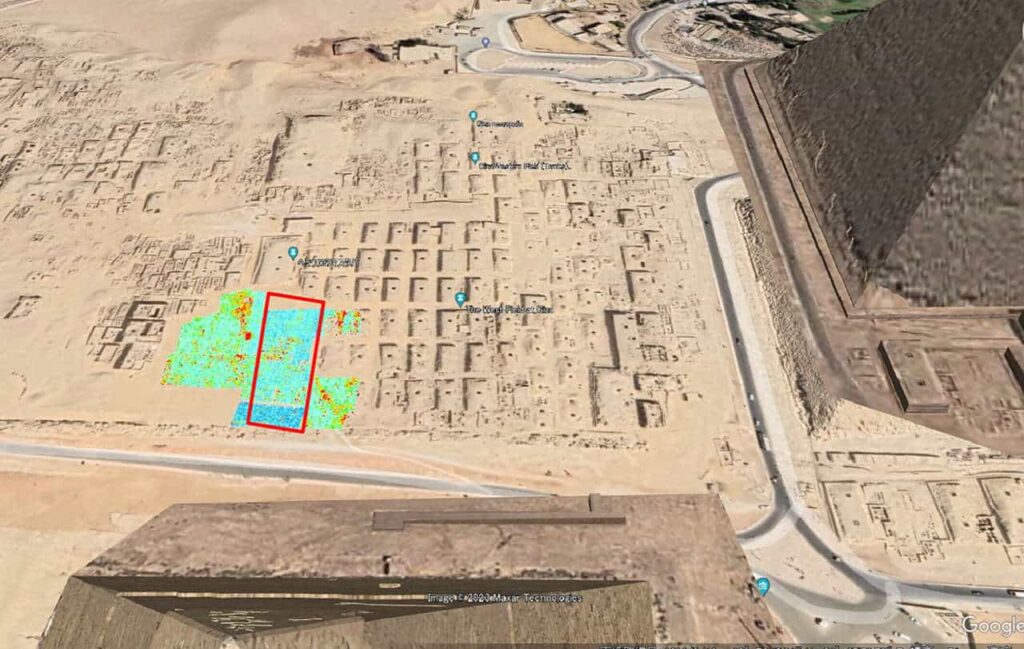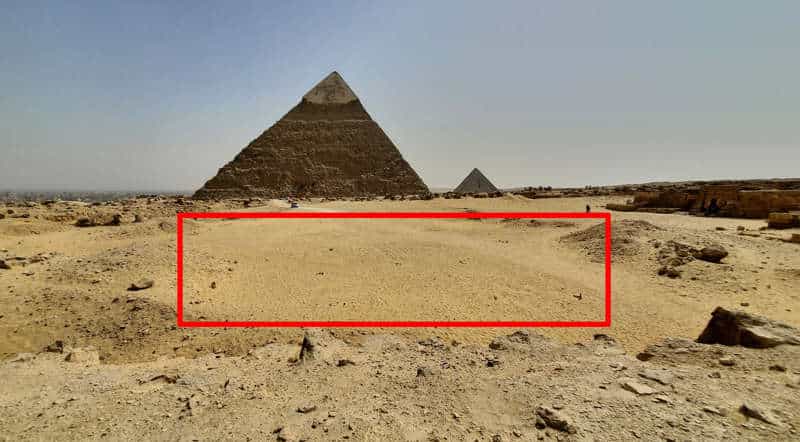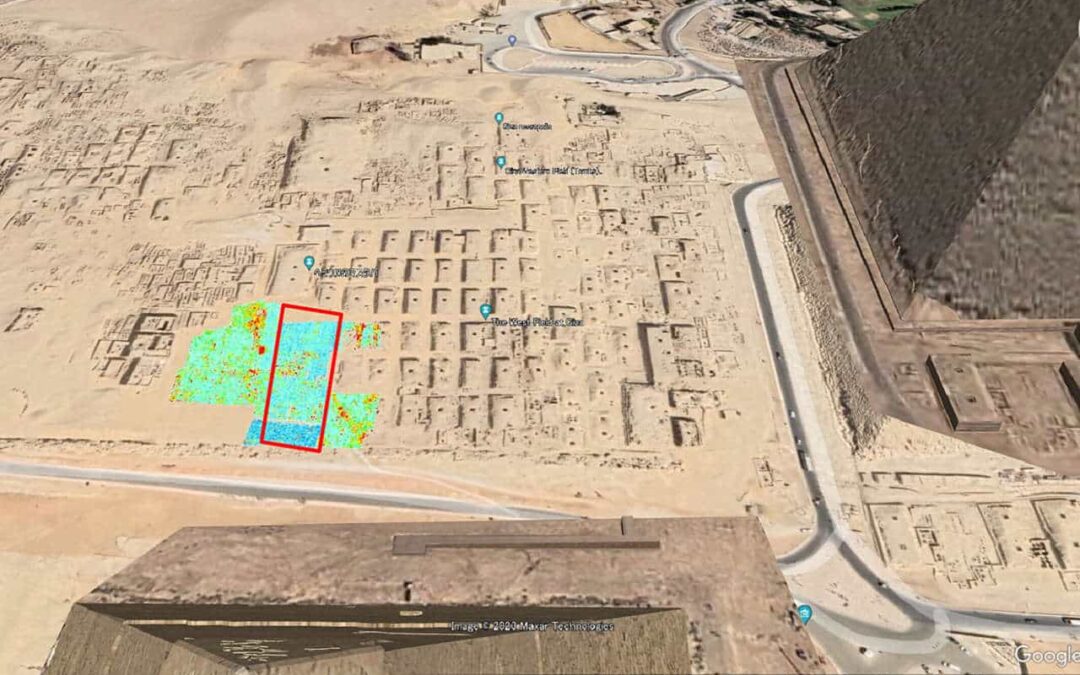On the Giza plain lies the famous necropolis where the pharaohs Khufu (2589 BC-2566 BC), Khafre (2558 BC-2532 BC), and Menkaure (2532 BC-2503 BC) of the 4th Dynasty of the Old Kingdom built their colossal pyramids. These structures were intended to be their final resting places, from which they would begin their journey to the stars to meet the gods.
However, Giza is home to more than just the three great pyramids and the famous Sphinx. Beside these monumental funerary complexes, the ancient Egyptians constructed numerous beautifully decorated mastabas—flat-roofed tombs with sloping sides—where members of the royal family, nobles, and high officials who had the privilege of spending eternity near their lord were buried.
Giza frequently makes headlines, and it has done so once again. A team of Japanese-Egyptian archaeologists recently conducted a geophysical exploration using ground-penetrating radar and electrical resistivity tomography west of Khufu’s Great Pyramid and next to Khafre’s pyramid.
Based on the results, researchers believe they have discovered a previously unknown anomaly: a shallow, L-shaped structure.
A Mysterious Structure
In a study published in the journal Archaeological Prospection, Motoyuki Sato, an archaeologist at the University of Tokyo and lead author, stated, “From the results of the study, we cannot determine the material causing the anomaly, but it could be a large underground archaeological structure.”
This significant discovery follows another made last December by Eman Ghoneim, a geomorphologist from the University of North Carolina, who documented for the first time a 100-kilometer canal that connected the pyramids of Giza and was likely a crucial element in their construction.
The survey was conducted between 2019 and 2023 in a flat and seemingly empty area of the Giza necropolis. Although no significant remains were visible on the surface, researchers speculated about the possibility of something hidden underground.
“We believe we identified an L-shaped structure approximately 10 by 15 meters, at a depth of 0.5 to 2 meters, filled with sand, suggesting a void was filled with sand after construction and that this could be connected to another structure at a greater depth,” said Motoyuki Sato.
This second anomaly, documented by ground-penetrating radar, is located 10 meters deep. Could it be a mastaba? archaeologists wonder. “We cannot determine the material causing the anomaly, but it may be a large underground archaeological structure.
The results of the ground-penetrating radar suggest the presence of archaeological remains,” the experts conclude. Archaeologists affirm that the next step is to excavate and solve the mystery posed by these structures hidden in the shadow of the three great pyramids.
Source: JM Sadurni, National Geographic








